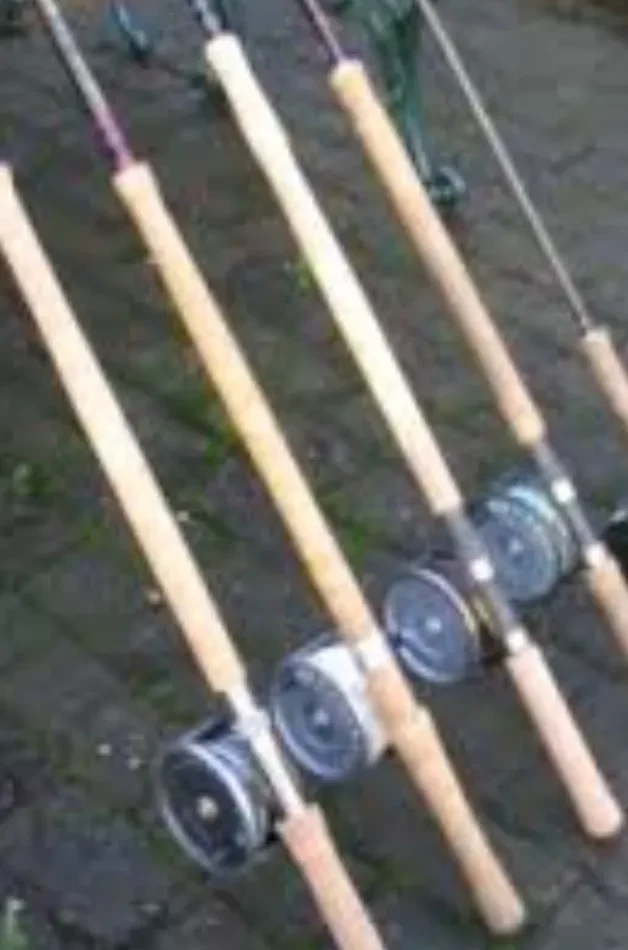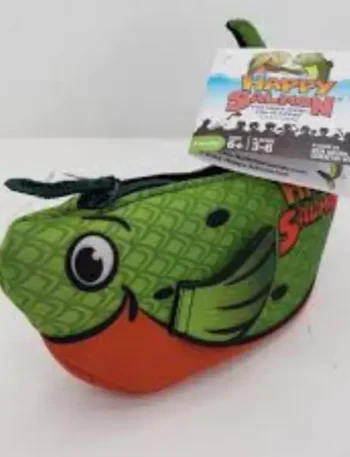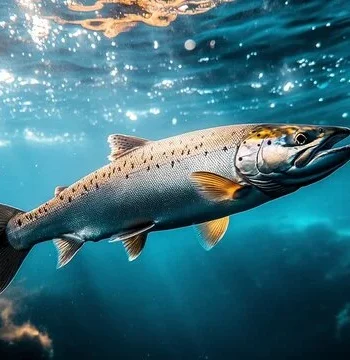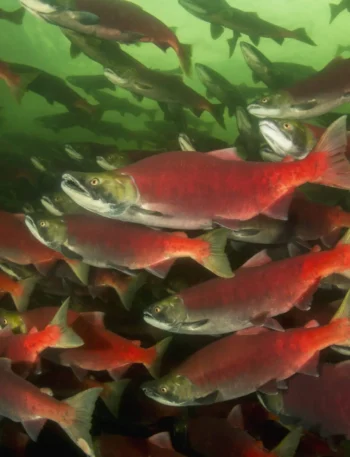When you’re gearing up to catch salmon, the right salmon fishing tackle is your ticket to success. You don’t want to be on the water, fighting the fish of a lifetime, only to lose it because your gear failed. That’s why choosing the proper rods, reels, lines, hooks, and lures is absolutely essential for any salmon fishing adventure—whether you’re casting in rivers, trolling the coastline, or fly fishing upstream. In this guide, you’ll get everything you need to know about salmon fishing tackle, right from the start.
We’ll cover the best tackle setups for each type of salmon, help you pick gear based on location (saltwater or freshwater), and even suggest the most reliable brands that won’t break your budget. By the end, you’ll feel fully prepared and confident to assemble your own high-performing salmon fishing tackle box.
Let’s dive into the nuts and bolts of salmon tackle!
Table of Contents
Introduction to Salmon Fishing Tackle
What is Salmon Fishing Tackle?
In simple terms, salmon fishing tackle includes all the tools and equipment used to catch salmon: rods, reels, lines, hooks, lures, swivels, and weights. The quality and combination of this gear can determine how many bites you get—and whether you land them.
Why Choosing the Right Tackle Matters
Salmon are powerful, fast, and often unpredictable. Using gear that’s not up to the task means you’re likely to lose the fish, snap a line, or end your trip frustrated. Good tackle boosts your chances of not just hooking a salmon, but also reeling it in successfully.
Core Components of Salmon Fishing Tackle
Fishing Rods for Salmon
A salmon rod needs to be strong yet flexible. For most anglers, a medium-heavy to heavy action rod that’s 9 to 10 feet long is ideal.
Best Rod Length and Power
- River fishing: 8–9 ft rods for better casting control.
- Boat or trolling: 9–10 ft rods with heavy power.
- Go for graphite or composite materials—they offer a solid combo of strength and sensitivity.
Fishing Reels for Salmon
Reels should hold plenty of line and be durable enough to fight strong fish.
Spinning vs Baitcasting Reels
- Spinning reels: Easier for beginners and better for lighter setups.
- Baitcasting reels: Great for experienced anglers targeting larger salmon or trolling.
Fishing Lines for Salmon
The type of fishing line matters more than you might think.
Monofilament vs Braided vs Fluorocarbon
- Braided line (30–50 lb): High strength, perfect for tough fights.
- Monofilament (20–30 lb): Cheaper, stretches more, better for beginners.
- Fluorocarbon leaders: Nearly invisible in water, excellent for picky salmon.
Hooks for Salmon Fishing
Use size 1/0 to 4/0 hooks for most salmon. Barbless hooks are often required in certain regions. Always match hook size to bait and target species.
Lures and Baits for Salmon
Top Artificial Lures
- Spinners (Blue Fox, Mepps)
- Spoons (Krocodile, Little Cleo)
- Plugs (Kwikfish, Flatfish)
Natural Bait Options
- Roe (salmon eggs)
- Herring
- Shrimp
- Sandworms
Matching Your Tackle to Salmon Species
Tackle for Chinook (King) Salmon
- Heavy rods
- 40–60 lb braided lines
- Large plugs or cut-bait herring
Tackle for Coho (Silver) Salmon
- Medium-heavy rods
- 20–30 lb mono or braid
- Flashy spinners and twitching jigs
Tackle for Sockeye and Pink Salmon
- Light to medium rods
- 10–20 lb lines
- Small spoons, flies, or jigs
Freshwater vs Saltwater Salmon Fishing Tackle
Key Differences in Tackle Requirements
- Freshwater: Lighter gear, smaller hooks, shorter rods.
- Saltwater: Corrosion-resistant reels, heavier lines, bigger baits.
Fishing in saltwater also means using gear that resists rust and handles stronger tides.
Seasonal Tackle Selection Tips
Best Gear for Spring Salmon Fishing
- Use brighter lures like chartreuse or pink.
- Add scent to bait for cold water attraction.
Fall Tackle Adjustments
- Switch to darker lures like purple or black.
- Increase hook size for spawning salmon with tougher jaws.
Best Tackle Brands for Salmon Fishing
Shimano, Penn, Okuma & More
- Shimano: Premium rods and reels.
- Penn: Best for saltwater conditions.
- Okuma: Great balance between price and performance.
- Abu Garcia & Daiwa: Also top choices for durability.
Budget vs Premium Salmon Fishing Tackle
What Should You Spend More On?
Spend more on reels and rods—they’re your main workhorses. You can cut costs on accessories like swivels, sinkers, and even lures (as long as you have variety).
Tips for Maintaining Your Tackle
- Rinse gear after saltwater use.
- Check lines for frays before each trip.
- Store in a dry place to avoid rust.
- Lubricate reels regularly.
Common Mistakes When Choosing Salmon Fishing Tackle
- Going too light on line strength.
- Ignoring local fishing regulations (hook types, bait restrictions).
- Using one setup for all species and waters.
- Not testing knots before use.
Conclusion
Choosing the right salmon fishing tackle isn’t just about buying expensive gear—it’s about smart choices. When you match your tackle to the species, environment, and season, your success rate skyrockets. Whether you’re a beginner or experienced angler, this guide gives you everything you need to make your next salmon fishing trip a total win.
FAQs
What is the best size hook for salmon?
Usually between 1/0 and 4/0, depending on salmon size and bait.
Can I use the same tackle for trout and salmon?
Not ideally. Salmon need stronger rods, heavier lines, and tougher reels.
What’s the best time of day to fish for salmon?
Early morning and late evening are best—when light is low and salmon are active.
Do I need different tackle for river vs ocean salmon?
Yes. Ocean tackle needs to be saltwater-resistant and heavier.
What lure colors work best for salmon?
Bright colors (chartreuse, pink, orange) work great in murky waters; darker shades are better in clear conditions.





